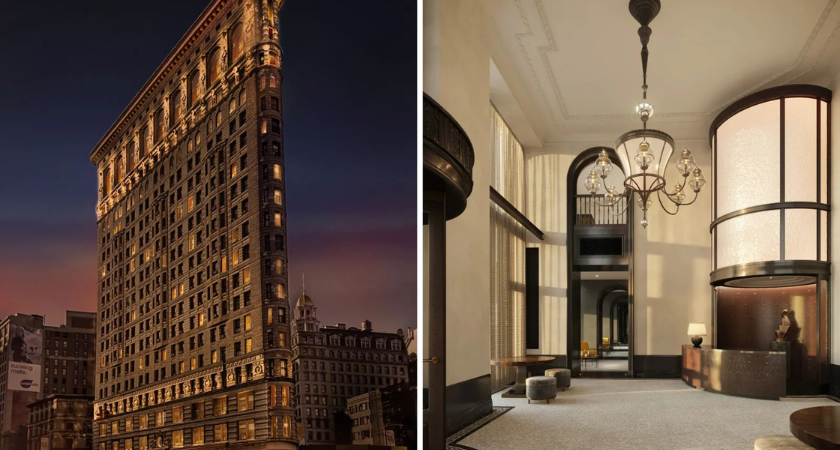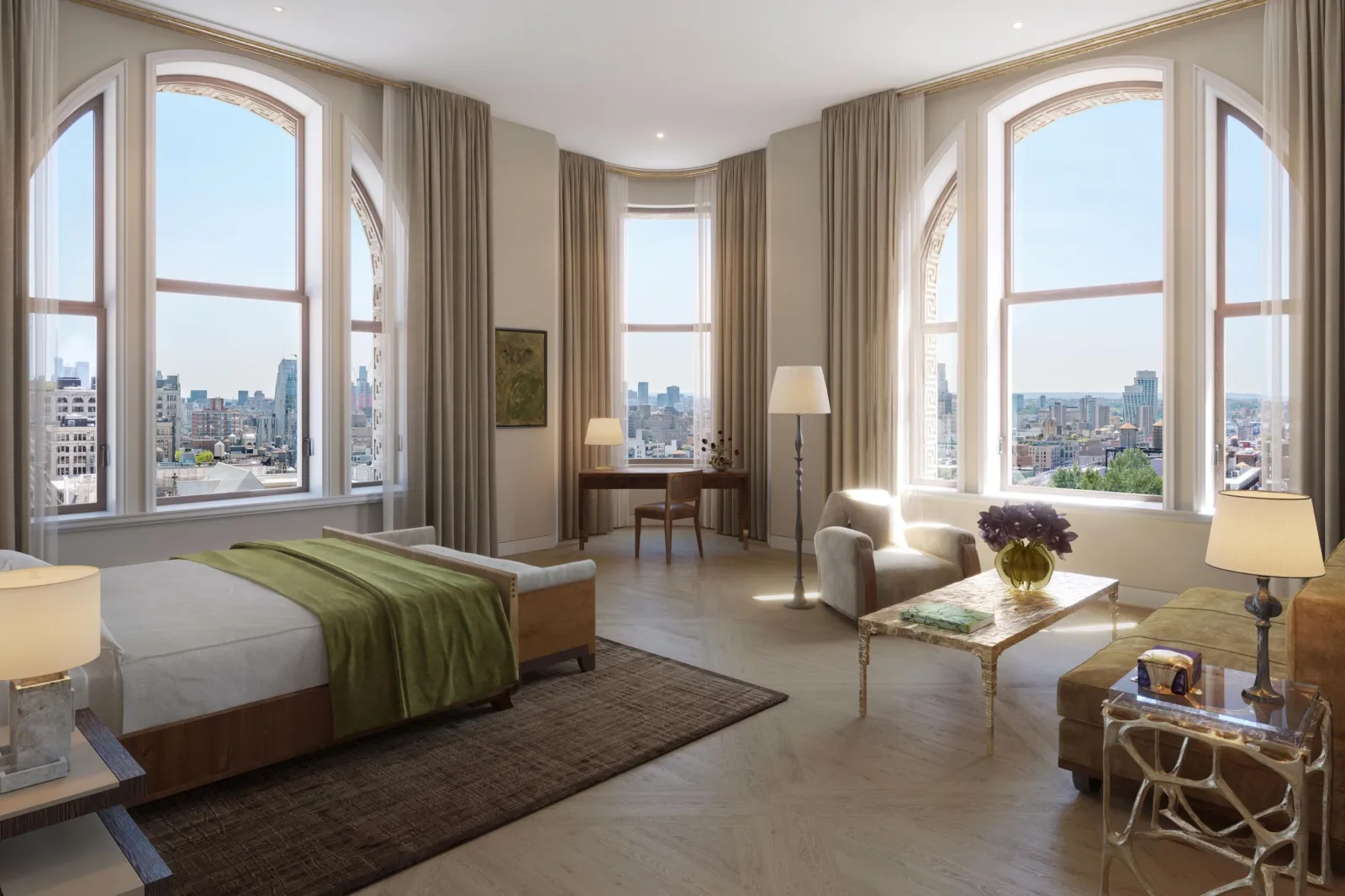
New York City’s instantly recognizable Flatiron Building is entering one of the boldest transformations in its 123-year history. The 307-foot, 24-story landmark — completed in 1902 as the Fuller Building — will soon become a collection of private luxury homes, marking what developers describe as a “transformation of historic proportions.”

The Brodsky Organization, together with The Sorgente Group, is converting the world-famous triangular skyscraper into 38 residences. Sales are planned to begin later this year, with three-bedroom units starting at $11 million. According to a spokesperson for the project, “Three units are now in contract,” who also shared exclusive interior renderings of the redesigned spaces.
Most homes will consist of expansive three-, four- and five-bedroom layouts spanning half or entire floors. The spokesperson added: “Each residence will feature a unique layout, providing never-before-seen views across the New York City skyline.”
Designed by architect Daniel Burnham in the Beaux-Arts style and once celebrated for its radical steel-frame engineering, the Flatiron has long stood as a symbol of innovation. Today, the same pioneering spirit is shaping its future as a residential icon.
The project team is undertaking a comprehensive restoration of the building’s façade, working closely with the New York City Landmarks Preservation Commission to ensure historical accuracy. The exterior was originally modeled to resemble a classical Greek column, detailed with limestone, brick and terra-cotta ornamentation. That legacy is being meticulously preserved.
The years-long preservation work involved:
These efforts are bringing the Flatiron back to its architectural prime — while preparing it structurally for luxury residential living.

Interiors are being led by renowned designer William Sofield, founder of Studio Sofield. Known for his work with luxury brands like Tom Ford, Gucci, Bottega Veneta and Harry Winston — along with celebrity clients including Madonna, Kelly Ripa and Mary-Kate Olsen — Sofield is personally designing every residence and amenity space.
The designs draw from original building features, including:
Modern finishes and contemporary layouts will merge with those historic elements, giving residents both a sense of timeless character and sophisticated luxury.
The conversion is not only a real estate milestone — it represents a broader trend of iconic commercial buildings being reborn as luxury homes, driven by shifting office markets and rising demand for historic, high-end properties. For future residents, it offers a rare opportunity to live inside an architectural work of art that helped shape the modern skyline.
The Flatiron’s next chapter brings together innovation, preservation and exclusivity — in true New York fashion.
Originally reported by Soo Kim Life and Trends Reporter in News Week.